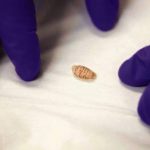Infections in the heart are rare and can be diagnosed by theoretically very distant symptoms. The most common cause is visits to the dentist.
Although in many occasions it is thought that medicine is a more or less exact science, the truth is that it is one of the most inaccurate branches of knowledge, where two plus two rarely add up to four . There are signs and symptoms that guide the professional almost automatically to one or two diagnoses and a conclusion can be reached with relative ease from the appropriate questions – and tests -.

That was not the case of a 27-year-old, who went to a hospital after having noticed a reddish spot on his hand, which later turned into a bluish lump that “beat”, similar to his heart. It was not an ordinary lump, as described in the report published in the New England Journal of Medicine , but a vascular aneurysm that could have been fatal.
According to the authors of this article, this bluish lump was a sign of an infection that the young man suffered in his heart , which the man may have contracted after a visit to the dentist, according to the doctors who treated him.
Initially, the patient went to the emergency room due to pain in the lump of his hand, but also in the upper left side of his abdomen. In addition, for the previous six weeks, she had had a fever , night sweats , and poor appetite . In fact, in just a month and a half, he had lost up to twelve kilos in weight .
After performing an ultrasound of the heart, studies revealed that there was an infectious mass on the valve of his aorta artery, the valve that regulates the flow of blood to this main artery – and prevents it from returning to the heart. Likewise, laboratory tests revealed that this infectious mass was due to the Streptococcus bacteria , a type of microorganism very common in cases of bacterial endocarditis, an infection that affects the heart valves . The most common are the aortic valve, as in this case, and the mitral valve – one of the valves that separate the upper and lower part of the heart.
For this type of infection to occur, the bacteria must have reached the bloodstream and finally the heart. In this case, after reaching this important organ, it also manifested itself in the palm of the patient’s hand. In fact, some signs of bacterial endocarditis usually include lesions on the fingers of the hands , although it is not a sign that is usually initially associated with an infection of this caliber.
A visit to the dentist, the origin of the problem
Although there are various entry points into the body that can lead to this type of infection in the heart, one of the most typical is a visit to the dentist . During dental procedures, the gums are manipulated, causing bleeding. Therefore, before and after these procedures, antibiotics are usually given, in order to avoid infections like this one.
Likewise, poor basic dental hygiene can also be the culprit of heart infections, since teeth in poor condition are weaker, and therefore more prone to gum damage and bleeding, opening the door to bacteria.
On the other hand, those individuals who already suffer from a heart defect previously tend to have a higher risk of infection in their heart valves. In the case of the report, it was found that the patient had a “bicuspid aortic valve”, that is, with only two portions – when there are usually three – a type of condition that affects 2% of the population.
Finally, the man was properly treated with antibiotics and all his symptoms disappeared within two days. Later, he underwent a surgical procedure to replace his aortic valve and repair the aneurysm in his hand.


